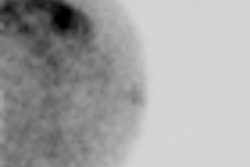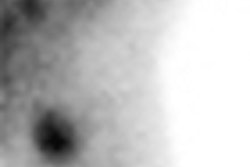
SALT LAKE CITY - Although molecular breast imaging techniques have the potential to carve out a role in screening, dose must be lowered to achieve a comparable benefit-to-risk ratio to mammography, according to a study presented Monday at the SNM annual meeting.
Administered doses of FDG and technetium-99m (Tc-99m) sestamibi should be reduced to 1 to 2 mCi and 2 to 4 mCi, respectively, according to researchers from the Mayo Clinic in Rochester, MN. They say lower dose levels will help women accept breast imaging by positron emission mammography (PEM), breast-specific gamma imaging (BSGI), and molecular breast imaging (MBI).
Lead study author Michael O'Connor, PhD, said even though the "dose is very low in mammography, women still refuse occasionally to have the mammogram because of [radiation] dose. They will be even more reluctant to have [molecular imaging] techniques if the dose is higher."
The research stems from a previous Mayo Clinic study designed to analyze approximately 1,000 patients who were asymptomatic for breast cancer and came to Mayo for a mammogram and molecular breast imaging exam. That study sought to determine if molecular breast imaging would be better than mammography for early detection of breast cancer.
Tumor detection
"The results of the study [currently in press] were very encouraging," O'Connor said. "Of those approximately 1,000 patients, we picked up 10 tumors on MBI and only three on mammography. It showed that these molecular imaging techniques have tremendous possibilities in certain subsets of the patient population."
To gauge the breast cancer risk from radiation, the current study hypothesized that patients would have annual screenings with one of the modalities for 40 years between the ages of 40 and 80.
To determine radiation dose from mammography, researchers used data from the Digital Mammographic Imaging Screening Trial (DMIST) for the average radiation exposure to breast tissue. For PEM, the study figured a standard dose of 370 MBq from FDG. For BSGI and MBI, they used the current standard range of doses of Tc-99m from 740 to 1,117 MBq.
With these calculations, researchers estimated the number of excess cancers that may develop with each imaging modality in a woman at age 45 or older.
"In essence, the cancers start to appear about five years after a procedure," O'Connor said. "By the time you get to age 45 or 50, with mammography you get an excess of about 50 cancers in 100,000 women over this 40-year screening period. With both FDG and Tc-99m, we ended up with between 400 and 500 excess cancers."
Dose reduction
In addition, over a 40-year screening period, mammography was estimated to result in a cancer mortality of 32 to 85 cases in 100,000 women. Assuming a 20% to 30% reduction in mortality from breast screening with mammography, there would be 513 to 769 lives saved, producing a benefit-to-risk ratio of approximately 10 to 1.
FDG resulted in a cancer mortality of 423 cases and Tc-99m resulted in a cancer mortality of 380 to 570 cases. Assuming similar reduction in mortality from screening with PEM, BSGI, or MBI would yield a benefit-to-risk ratio of approximately 1 to 1.
"In order to get these techniques comparable to mammography, we will have to reduce the dose we use for molecular imaging techniques of the breast," O'Connor said. "In order to get the two to match up, we had to reduce the dose of Tc-99m to about 111 MBq and within 1 to 2 mCi and FDG was down to 47 MBq. When you do that, you get very comparable mortality rates from mammography, PEM, BSGI, and MBI techniques."
In conclusion, O'Connor said administered dose needs to be "reduced to between 37 and 74 MBq for FDG and between 74 and 148 MBq for Tc-99m sestamibi in order for these techniques to give a comparable benefit-to-risk ratio. Dose reduction and radiation exposure levels comparable to mammography will also be important in patient acceptance of these techniques in the diagnostic environment."
The study was funded, in part, by the Mayo Foundation and a grant from the National Cancer Institute.
By Wayne Forrest
AuntMinnie.com staff writer
June 9, 2010
Related Reading
Screening mammography sensitivity is improving, study shows, May 27, 2010
Mammograms catch few cancers in young women: study, May 4, 2010
Breast cancer risk assessment starts with the right questions, March 23, 2010
BSGI proves best at detecting invasive lobular cancer, February 11, 2009
Molecular breast imaging offers promise as mammography adjunct, September 15, 2008
Copyright © 2010 AuntMinnie.com




















